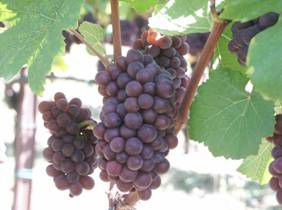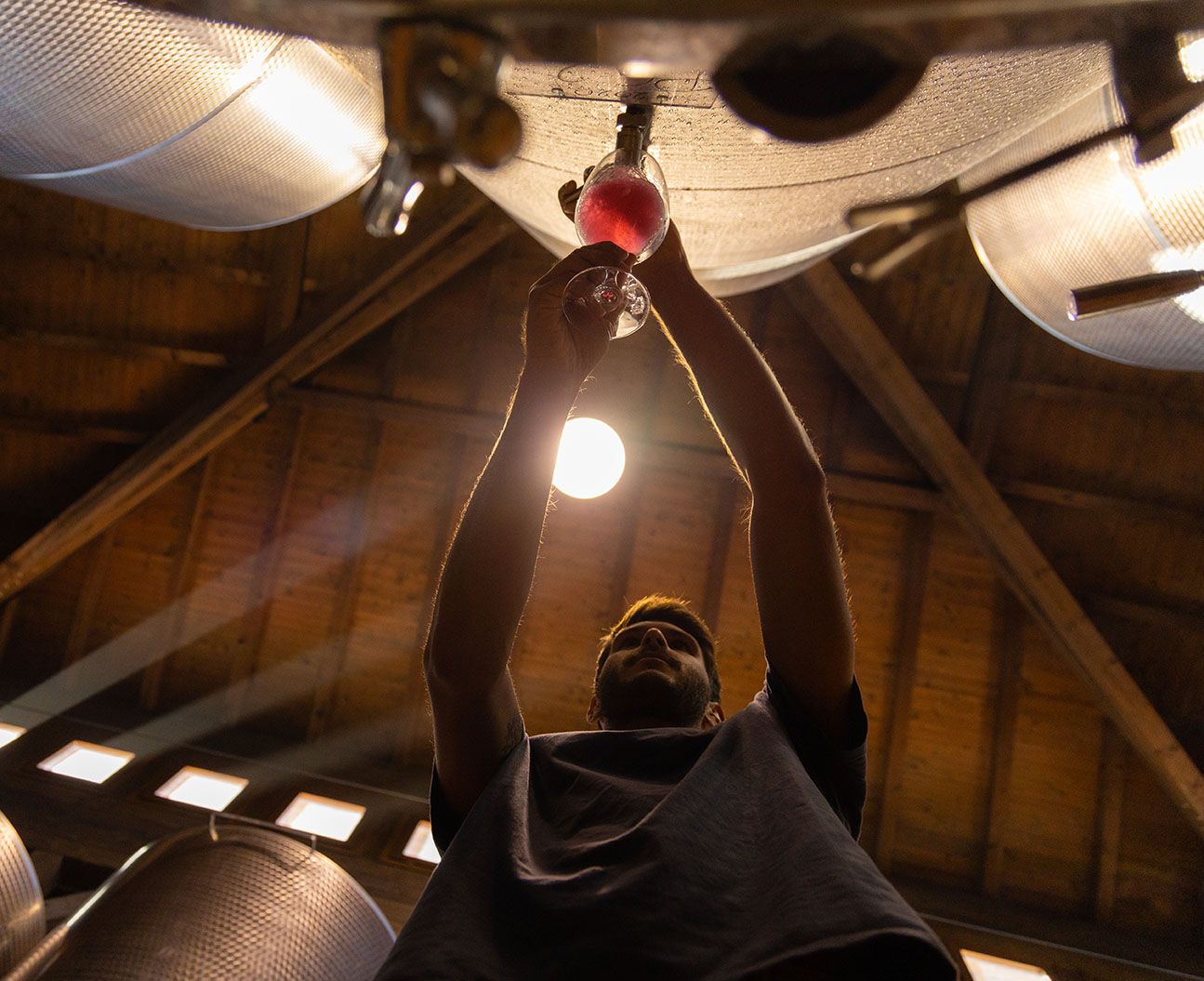IN DEPTH
PINOT GRIGIO
WHAT IS THE TRUE COLOR OF THE PINOT GRIGIO?

Straw yellow, coppery, paper white, rosé, onion skin: these are the hues that we can expect when we encounter a Pinot Grigio, so that the question often legitimately arises of what exactly is the correct colour expression of this wine.
Pinot Grigio is often called a white grape, but that is incorrect, since it is not at all a white grape. The name itself--grigio means grey-indicates that it is a grape that is not that is not perfectly white. This variety is an offshoot of Pinot Noir, and without entering into the minutiae of genetics, a glance at the colour of the berry is enough to see that.
This is exactly where we started, from the berry itself, in order to highlight all of the quality potential of this variety. We determined to demonstrate to the fullest extent possible Pinot Grigio’s distinctive characteristics, its rich fragrance, tannic mass, structural complexity, and therefore its unusual colour tonality as well.
GOING A BIT DEEPER INTO THE TECHNICAL DETAILS

The coppery hue of the wine is often attributed to a more or less extended maceration of the must on the skins, during which the colorants in the grape-skin pass into the must, as happens on a normal basis with red wines. In fact, however, the presence of colour in the must happens even when there is no skin contact during fermentation, since even when the grape is still on the vine, and it achieves ripeness, a certain amount of pigment passes into the juice in the berry. It is a fact that all musts of pinot grigio, when they are freshly pressed, exhibit a hue that is to some degree copperish, but only a few are able to preserve that tonality over time; the majority of the wines suffer a progressive loss of hue and finally display that hallmark straw yellow.
The reason for this behaviour lies in the fact that pinot grigio’s pigment, which derives from its anthocyanins, oxidises quite easily during the pressing process, and although it remains intact even during fermentation, it gradually disappears through progressive precipitation of the oxidised pigments. The final result is that the natural colour accumulates as sediment in the ageing container, colouring the fine lees pink.
If, however, processing the grapes and handling the must is performed in an oxygen-free environment, then the pigments naturally occurring in the grape will be preserved and will remain stable throughout the life of the wine. This is the process that we utilise for making our Dessimis. Its coppery colour, however, is not one of our style prerequisites; rather, it is a natural consequence of an oxygen-free production practice, aimed at preserving the full spectrum of the grape’s aromatic compounds, which can be lost during this stage of winemaking.
